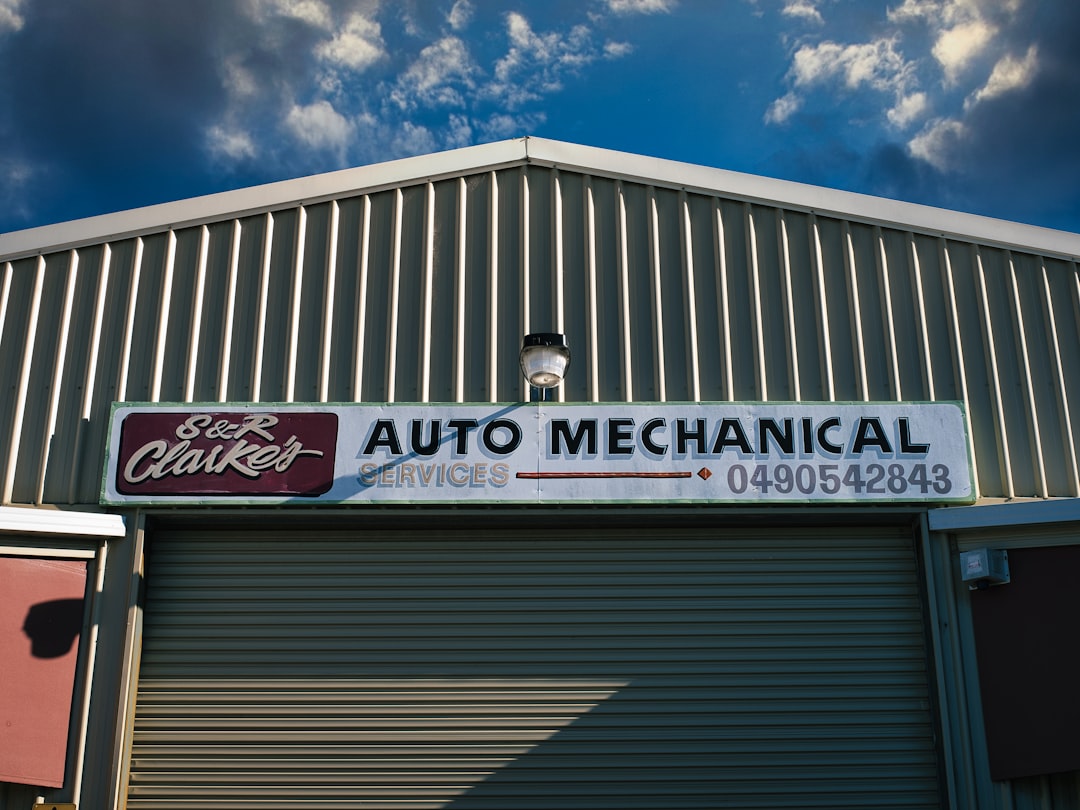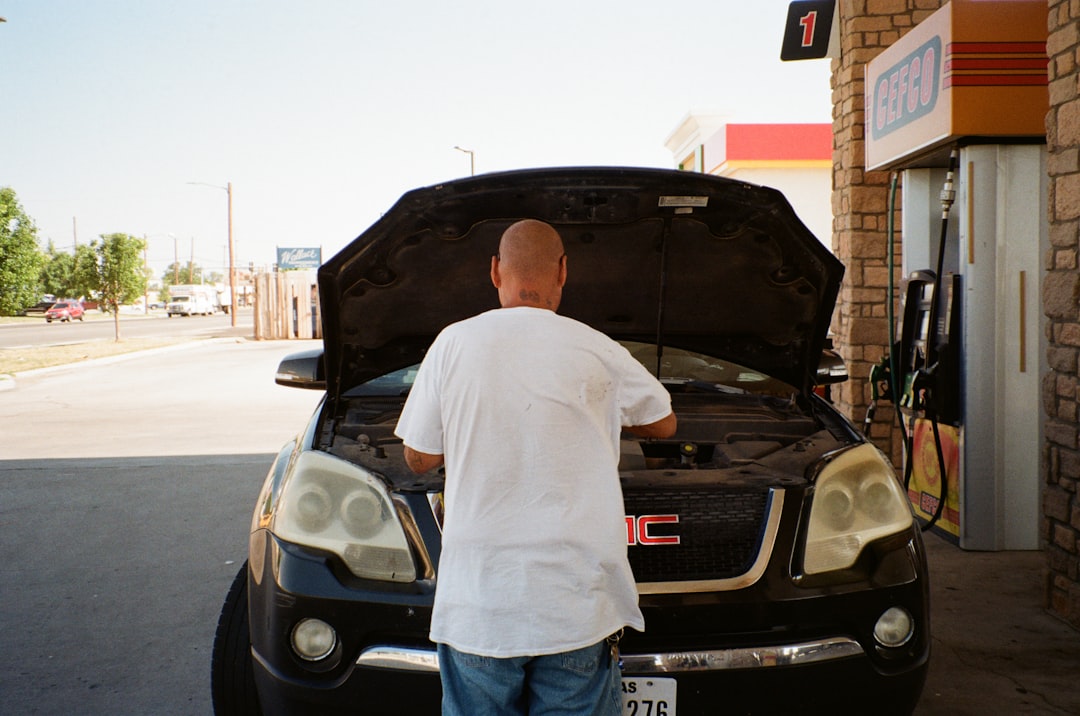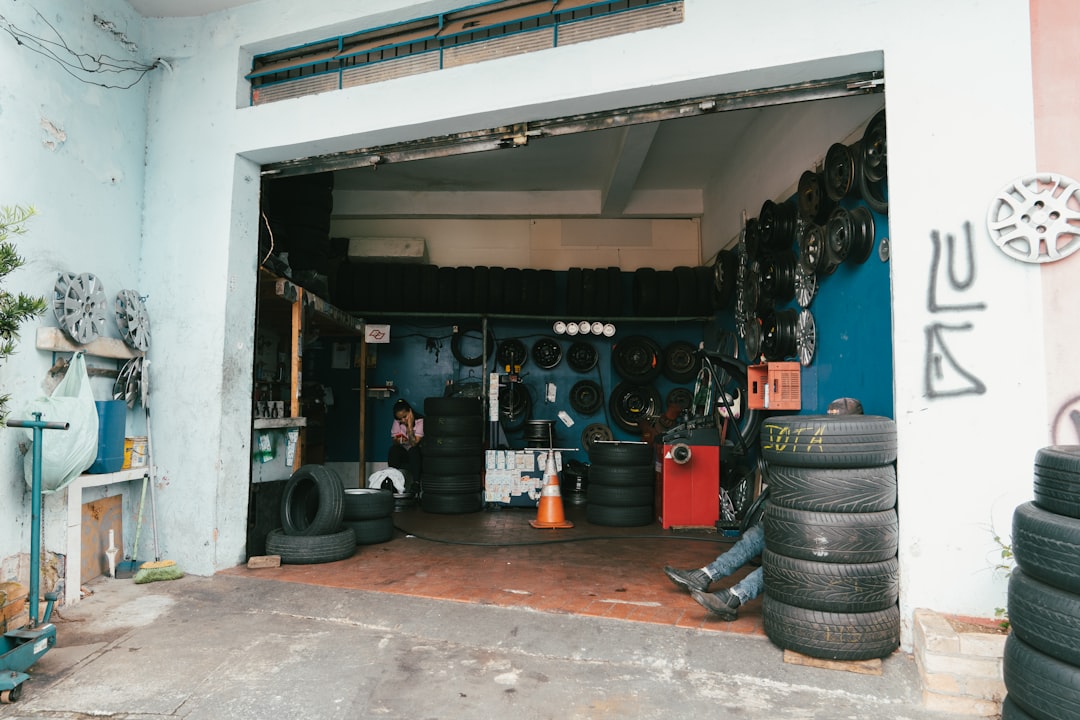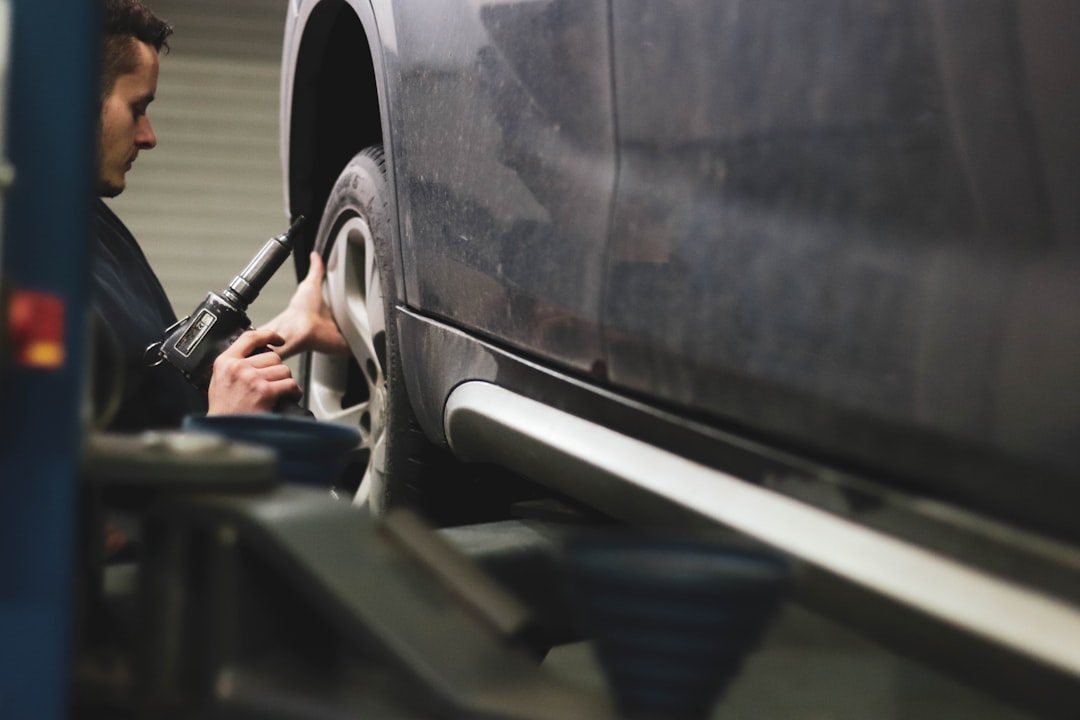

Engage prospects with a scan and streamline customer engagement with FREE QR code marketing tools by Sona – no strings attached!
Create a Free QR CodeFree consultation

No commitment

Engage prospects with a scan and streamline customer engagement with FREE QR code marketing tools by Sona – no strings attached!
Create a Free QR CodeFree consultation

No commitment
The world of online advertising never stops evolving. Keeping up with the latest strategies and technologies is now a necessity for marketers and businesses hoping to reach wider audiences. One of the most intriguing developments can be found in programmatic advertising, which enables brands to automate and optimize their ad buying process quickly and efficiently.
While traditional advertising methods are still prevalent, the shift toward automation offers new opportunities. Programmatic platforms not only allow real-time bidding but also provide access to targeted media placements that maximize campaign effectiveness. For businesses entering this space, understanding these platforms is crucial to achieving meaningful results.
Marketers have started to invest heavily in advanced data-driven tactics. Through detailed analysis of user behavior and demographic trends, they ensure their ads land before the right eyes at the right moment. The immense reach of digital media has prompted advertisers to fine-tune targeting, thus conserving budgets and increasing overall return on investment.
Despite all these advances, challenges remain. Fraudulent traffic continues to pose a threat to programmatic campaigns, and transparency in ad placements remains a concern among advertisers. As a result, several agencies have begun to collaborate with reputable partners, seeking certification and accountability standards that protect both brand image and media spend.
The future of programmatic advertising seems poised for further innovation. Developments such as predictive analytics and artificial intelligence promise to take campaign optimization to the next level, allowing even small brands to compete with industry giants through data-led insights and automated workflows. In this ever-changing landscape, staying informed and adaptable is the only way forward.
QR codes have transformed car tune-up services from routine maintenance into dynamic, customer-driven growth opportunities. Whether it’s attracting new clients, enhancing in-shop experiences, or streamlining appointment scheduling, QR codes replace outdated processes with instant, mobile-friendly actions that capture valuable engagement data—turning every interaction into a powerful conversion tool. Imagine your customers effortlessly accessing service history, special offers, or booking options with a simple scan, boosting loyalty and repeat visits.
With Sona QR, you can create dynamic, trackable QR codes in seconds, update campaigns instantly without reprinting, and link every scan directly to increased revenue. No more guesswork—just smarter marketing that drives measurable results and customer satisfaction. Start for free with Sona QR today and turn every scan into a tune-up, a trusted customer, or a lasting relationship.
Signs that your car needs a tune-up include decreased performance, rough idling, poor fuel efficiency, and difficulty starting the engine.
It is recommended to get a car tune-up every 30,000 miles or as advised by your vehicle's manufacturer.
A car tune-up typically includes inspecting and replacing spark plugs, checking and adjusting ignition timing, replacing air and fuel filters, and examining the engine for overall performance.
Reliable car tune-up services can be found by searching local automotive service centers, dealerships, or certified mechanics in your area.
The cost of a car tune-up varies depending on the vehicle and services needed but generally ranges from $50 to $200.

Keeping vehicles running at peak performance is a top priority for both auto service providers and their customers. As drivers become more reliant on digital touchpoints for everything from appointment scheduling to cost comparisons, car tune-up services face increasing pressure to bridge offline interactions with fast, data-driven online experiences, a shift outlined in Sona QR’s automotive guide. Many businesses still rely on outdated processes such as paper intake forms and static appointment reminder cards, which create not just friction, but also gaps where high-value prospects or loyal customers can slip through unnoticed. As Sona’s blog on offline attribution explains, these missed moments have a direct impact on retention and revenue, as shops often lack visibility into who is interacting with their marketing and when.
QR codes have emerged as a strategic solution for connecting physical service encounters to digital actions in real time. For car tune-up services, they deliver a seamless, cost-effective way to capture leads, drive appointment bookings, and gather valuable customer data without introducing tech hurdles for busy, on-the-go customers. For campaign ideas and setup best practices, see Sona QR’s QR code marketing. By bridging the gap between physical and digital, service stations and auto shops can modernize their approach, ensure potential leads are not lost due to untracked walk-ins or missed follow-ups, and gain much-needed insight into who is engaging with their campaigns.
Adopting QR codes empowers car tune-up providers to turn every surface—waiting room signage, receipts, or vehicle service reports—into a direct pathway to conversion. With intelligent platforms now available to design, deploy, and track QR code campaigns, businesses can engage customers at the right moment, nurture ongoing relationships, and quantify the actual impact of their marketing activities. Explore Sona QR’s product overview to see how scan tracking and attribution work end to end. For inspiration, watch these automotive examples.

QR codes act as powerful, friction-reducing touchpoints for making every customer interaction actionable and measurable. In car tune-up services, they can be leveraged to digitize appointment scheduling, collect review feedback, and deliver service reminders that outperform traditional analog tactics. For streamlined review capture, use this guide to Google reviews. This is especially important for addressing long-standing pain points like missed high-value customers who walk in but never fill out a form, or satisfied drivers who forget to leave a review after they get back on the road.
To make QR adoption systematic and outcomes-driven, connect each code to a clear business goal and track performance from the start. Replace paper-heavy or manual steps that stall conversions with simple scans, quick-loading landing pages, and automated follow-ups. The goal is to meet customers where they are: on their phones, in the lobby, at the counter, or at home reviewing an estimate.
Modern platforms like Sona QR streamline this workflow: creating branded, trackable codes; routing scans to the right destinations; and surfacing real-time analytics. That lets tune-up shops see exactly which touchpoints move customers from interest to appointment.

Car tune-up providers operate in a landscape where speed, transparency, and customer convenience are essential. Yet many shops still struggle to see who is engaging, where bottlenecks occur, and which marketing moments truly drive bookings. Traditional methods keep too many steps offline, making it tough to attribute revenue or follow up with anonymous prospects who are likely to choose a faster or more convenient competitor. QR codes close this offline-to-online loop by enabling instant actions and measurable outcomes.
By placing scannable calls to action directly on the materials customers already see, QR codes shorten the journey between awareness and conversion. Drivers can scan an estimate to accept a recommended maintenance package, scan a counter sign to book their next tune-up before leaving, or scan a take-home reminder to join a loyalty program. When powered by dynamic, trackable links, QR codes turn once-opaque interactions into data you can use.
In a business where every extra appointment impacts the bottom line, QR codes let you orchestrate and measure the micro-moments that lead to conversion: on invoices, on lobby signage, on take-home estimates, and across direct mail.

Tune-up shops benefit from several QR formats that map to common customer actions. Using the right format for each scenario ensures that scans are effortless and that downstream steps match customer intent. Consider how each format fits in your process and the physical environment where it will be scanned.
For most car tune-up workflows, dynamic web links and forms will be the primary workhorses, since they support booking, estimate approvals, and reviews. SMS and email triggers are ideal for quick confirmations or to initiate two-way conversations when a customer prefers texting over calling. vCards help ensure customers can save your shop’s details with one tap, which reduces misdials and makes future contact seamless.
With Sona QR, you can generate and manage all these formats in one place, then update destinations, apply UTM parameters, and aggregate analytics without reprinting.

Growth often hides in everyday materials and moments that are already in front of customers. The challenge is that traditional assets like counter signs or paper estimates do not reveal who is interested or how to follow up. QR codes change that by turning each touchpoint into a measurable conversion path and creating new opportunities to capture intent.
By thoughtfully placing QR codes where motivation is naturally high, you can elevate existing processes without overhauling your operations. Start by instrumenting your highest-traffic locations and most common customer handoffs. Then use the resulting data to refine offers, streamline CX, and prioritize future tests.
Placed strategically, QR codes transform static assets into always-on conversion engines that produce data and revenue, not just awareness.

QR codes shine when they align with the specific decisions customers face before, during, and after a tune-up. Concentrate on a few high-impact workflows first, then expand into additional use cases once you have data and momentum. Each use case should have a single, clear action and a matching landing experience.
By mapping QR codes to the moments that matter most—booking, approval, feedback—you shorten the path to action and make outcomes measurable. The three use cases below are proven starting points for most shops.
Shops using these strategies see friction shrink across the journey, higher conversion on recommended services, and more review volume that feeds local SEO. Most importantly, every scan becomes a tracked signal that informs marketing and operations.
One of the biggest frustrations in car tune-up marketing is the volume of anonymous in-person interactions. Drivers may pick up an estimate, read a service menu, or glance at a poster, yet there is no easy way to segment, retarget, or personalize follow-up. QR-powered workflows address this by converting each scan into a data point you can act on.
With a little planning, your shop can create segmented lists that reflect buyer intent, location, and timing. These segments then power tailored email sequences, SMS nudges, and paid media audiences. For campaign tactics, see Sona’s playbook on intent-driven retargeting. Over time, this reduces wasted spend and boosts conversion by focusing on the right message for the right person at the right moment.
Automated audience builders like those in Sona QR accelerate this work by enriching records and keeping segments up to date. The outcome is a smarter retargeting engine that converts more scans into confirmed bookings and repeat business.
QR codes connect your offline visibility to your digital engine. Rather than treating print assets and in-store signs as awareness only, you can turn them into direct-response channels that capture intent and feed your CRM. This strengthens attribution, increases conversion, and allows you to optimize spend with confidence.
Map QR codes across all the channels you already use: print, social, events, video, and in-lobby screens. Use consistent design patterns and clear, benefit-focused CTAs so customers recognize and trust your scannable experiences anywhere they see them.
When all scans flow into a centralized platform like Sona QR, you can compare performance across channels, sync data to your CRM and ad platforms, and iterate on creative and placement with real-time feedback.
Launching your first QR campaign requires a clear goal, the right code format, and a thoughtful deployment plan. The steps below walk you from use case selection through measurement so you can turn scans into revenue without guesswork. Aim to keep each scan-to-action experience under 20 seconds and under three taps.
As you iterate, test small, iterate weekly, and scale what works. It is better to run several focused QR experiences than one cluttered catch-all that confuses customers or dilutes measurement.
Each step reduces the chance that prospects go untracked and increases the likelihood that you learn, adapt, and grow bookings week after week.
Historically, auto service marketers have struggled to tie individual touchpoints to revenue, especially when journeys hop from a counter conversation to a take-home estimate to a mobile booking form. QR analytics make those connections visible so you can see what is working and what needs to change. With the right setup, you can move beyond vanity scan counts to understand full-funnel impact.
Start by capturing detailed scan data: time, device, placement, and offer. Then connect that data to downstream actions like form fills, appointment confirmations, estimate approvals, and even repeat visits. This approach turns QR codes into a core part of your performance marketing toolkit instead of a side experiment.
By translating anonymous scans into known leads and measurable revenue, you can prove ROI, refine your messaging, and invest confidently in the assets that move the needle.
Scaling QR success is about consistency, clarity, and continuous improvement. The more intentional you are about code design, placement, and follow-up, the more likely customers are to scan and convert. A few disciplined practices will elevate performance across your campaigns.
As you expand, add creative deployments that match your environment. Small touches like mirror hangers or oil change stickers can deliver outsized results because they show up at the exact moment a driver is thinking about service.
You can generate and track your first QR codes for free with Sona QR. Start creating QR codes for free. Then layer in CRM syncs and attribution through Sona’s intent data and analytics as your program matures.
QR codes have shifted from nice-to-have add-ons to foundational tools for car tune-up services that want to modernize operations and capture more demand. In an environment where fragmented processes and anonymous traffic can cause valuable leads to slip away, QR-enabled workflows deliver the transparency and agility that modern shops need. By embedding scannable experiences into appointment cards, invoices, estimates, signs, and mailers, service providers can turn every moment of interest into action and every action into data.
The payoff is tangible. Shops that implement QR codes with clear goals and good analytics see faster bookings, more review volume, higher acceptance of recommended services, and stronger attribution across their marketing mix. With platforms like Sona QR and Sona, even small teams can launch trackable codes in minutes, manage campaigns centrally, sync with CRMs, and connect scans to revenue. In short, QR technology lets car tune-up services move beyond guesswork and into a repeatable, data-driven growth engine that is easy for customers to use and powerful for teams to optimize.
QR codes have transformed the car tune-up services industry from traditional customer interactions into dynamic, measurable growth opportunities. Whether it’s attracting new customers, enhancing appointment scheduling, or providing instant access to service histories, QR codes replace manual processes with seamless, mobile-friendly actions that capture real-time engagement data—turning every touchpoint into a powerful conversion tool.
Imagine knowing exactly which flyers, service reminders, or in-shop displays drive bookings—and being able to optimize your campaigns instantly. With Sona QR, you can create dynamic, trackable QR codes in seconds, update campaigns without reprinting materials, and directly link every scan to increased revenue and customer loyalty. No more guesswork, just smarter, more effective marketing for your car tune-up business.
Start for free with Sona QR today and turn every scan into a loyal customer, a booked appointment, or a valuable upsell.
The article does not specify signs for when a car needs a tune-up.
The article does not provide information on how often to get a car tune-up.
The article does not detail what a car tune-up includes.
While the article does not list specific locations, it recommends using modern tools like QR codes to find and book car tune-up services quickly and suggests platforms like Sona QR to connect customers to service providers.
The article does not mention the cost of a car tune-up.
QR codes connect physical service encounters to digital actions, enabling seamless appointment scheduling, review collection, service reminders, and data tracking to boost conversions and customer engagement.
Common QR code use cases include appointment scheduling, post-service review collection, and service package upsells through links on signs, invoices, and receipts.
Dynamic QR codes with tracking parameters capture scan data by location, time, and device, allowing shops to analyze which placements drive bookings, attribute revenue, and optimize marketing spend.
Car tune-up services can use web links for bookings, vCards to share contact info, SMS or email triggers for confirmations, Wi-Fi access codes for lobby internet, and app download links for loyalty programs.
Shops can deploy unique QR codes per journey stage and action intent, segment scans by time and location, sync data with CRMs, and create personalized campaigns to improve retargeting and conversions.
Place QR codes at high-intent locations such as front desks, waiting areas, service bay doors, printed estimates, invoices, mirror hangers, receipts, direct mail, and event signage.
Start with a clear goal and use case, choose dynamic QR codes, design branded codes with clear CTAs, place them where intent is high, track performance with analytics, and iterate based on data.
QR codes enable customers to quickly scan to book appointments, approve services, leave reviews, or save contact info without typing URLs or downloading apps, making the process faster and simpler.
Integrating QR codes across print, social, events, and digital signage creates measurable conversion paths, strengthens attribution, increases bookings, and allows optimization of marketing spend.
Use Sona QR's trackable codes to improve customer acquisition and engagement today.
Create Your FREE Trackable QR Code in SecondsJoin results-focused teams combining Sona Platform automation with advanced Google Ads strategies to scale lead generation

Connect your existing CRM

Free Account Enrichment

No setup fees
No commitment required

Free consultation

Get a custom Google Ads roadmap for your business






Launch campaigns that generate qualified leads in 30 days or less.
